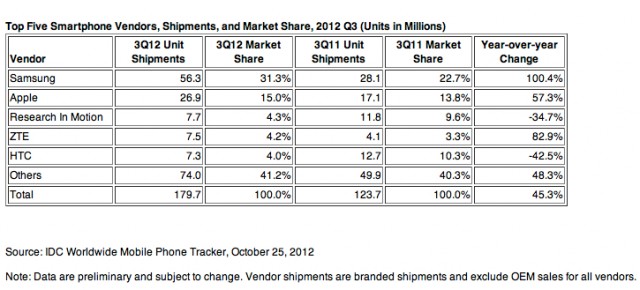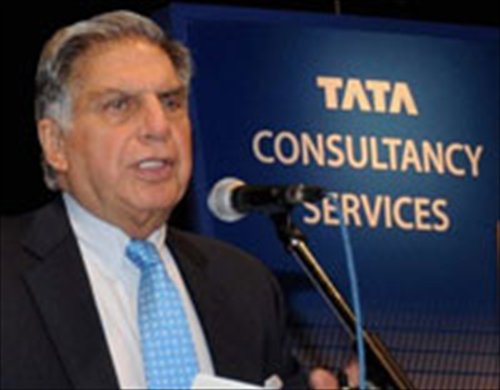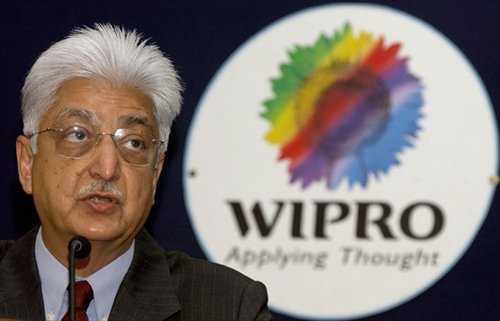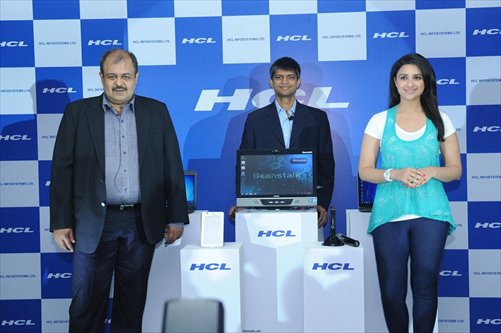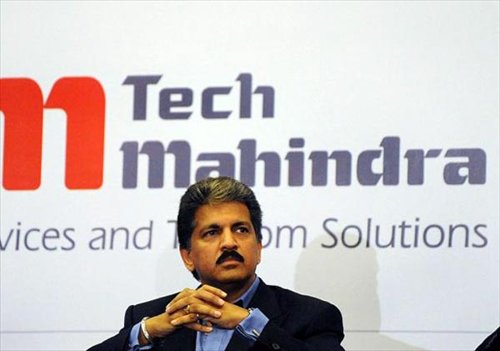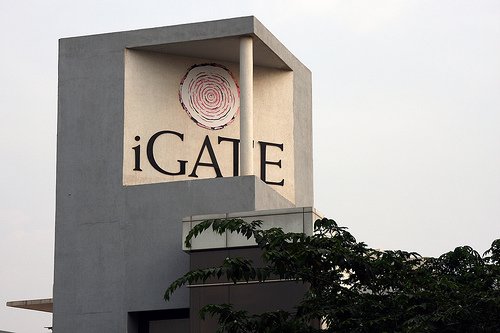
Zuckerberg and team at Facebook on IPO day
(Credit:
Facebook
)
If there's one thing that Mark Zuckerberg has learned in
Facebook's short life as a public company, it's that Wall Street is an
unforgiving place.
The Street cares little about wide-eyed talk about making the world a
more connected place. Even Facebook's recent announcement that it now
has
1 billion users
-- roughly a seventh of the world's entire population -- logging onto
the social network at least once a month did nothing to help the stock,
which now trades at about half its IPO price of $38 a share.
Wall Street, in short, wants to see the money.
It seems that Zuckerberg has gotten the message. In recent months,
Facebook has rolled out product after product aimed squarely at boosting
Facebook's bottom line -- from letting members
send friends physical gifts to giving them the option to
pay $7 to promote their posts
to their Facebook friends and subscribers. Most of these efforts won't
trickle down to Facebook's financial results when the company reports
its third-quarter earnings on Tuesday. Instead, investors will be
looking for words of encouragement -- hopefully, with some specifics --
from Zuckerbrerg and his chief lieutenants, COO Sheryl Sandberg and CFO
David Ebersman.
As it stands, Wall Street expects Facebook to post quarterly revenue
of $1.23 billion and earn 11 cents a share. While that would be an
almost 29 percent revenue jump from the year earlier quarter, Facebook's
growth is slowing. And clearly investors are jittery:
Google's earnings miss last week
emphasized the challenges from the weak economy in Europe (also a
potential problem for the ad-driven Facebook) and just how fast the
shift to mobile is occurring (ditto on the problem front). Shares of
Facebook have fallen more than 13 percent in the last few weeks.
The mobile 'opportunity'
When Zuckerberg took the stage at a TechCrunch conference in September, he r
eframed the discussion about Facebook's mobile problem with the skill of a smooth politician. Suddenly, Facebook's biggest challenge became a great way to "
make a lot of money." And he has since talked about mobile as Facebook's "
massive opportunity."
Opportunity or problem, it's certainly a reality, with roughly 600
million of those 1 billion users accessing Facebook via their smart
phones.
So what's been going on with mobile and money? The biggie on this front is
Sponsored Stories
-- Facebook's euphemistic term for the mobile ads that show up in News
Feeds of a brand's fans and their friends. This effort should come with a
dollar sign attached to it. During the second-quarter earnings call,
Zuckerberg said that as of late June Sponsored Stories were generating
about $1 million a day, with half of that coming from mobile. That would
give
Facebook about $182 million in annual mobile revenue, a strong start for sure.

Facebook's ads in mobile News Feeds
But the company has been pushing hard on this front, and by now that
figure should be bigger. In August, for instance, Facebook began a test
in which brands can pay to have their sponsored posts show up in Web and
mobile News Feeds of Facebook users who have no connection to the
brand. That was a
surprising move,
given Zuckerberg's concern for not cluttering up people's News Feeds.
But now that he has investors and employees to please, something's gotta
give. Let's hope Zuckerberg sheds some light on the money behind all
this -- and, importantly, on whether users are getting irked by all
these ads.
Facebook has gone even further with its push for money from mobile. Consider:
-
App ads for all. In August, Facebook began letting some
developers buy ads in mobile News Feeds as a way to drive more people to
their apps. Last week, which was already into the fourth quarter, it opened that up to all developers,
so clearly the company sees promise here. "This seems like a killer
mobile ad unit," says Brian Pitz, an analyst with Jefferies &
Company. "What developer wouldn't want to be able to buy downloads? Many
would be willing to pay $2 to $5 per download, maybe much more."
-
Mobile ad network. Just before the quarter ended, Facebook began
testing a mobile ad network through which it's selling ads that appear
on apps or mobile sites you visit outside of Facebook, which is
certainly helpful on the not-cluttering-up-your News Feed front. The ads
are targeted based on your Facebook data, just as Facebook is doing
with Web ads on Zynga.com.
Facebook has been mum about this to date, and I wouldn't expect much
detail since the effort is nascent. But this a big opportunity. Just
look at Google's AdMob, which Pitz expects to generate as much as $2 billion in revenue this year.
Speaking of big, what about Instagram, the startup
Facebook bought in a stock and cash deal that sank in price with
Facebook's stock -- from
$1 billion to $736 million when it finally closed in September? Instagram, as
Zuckerberg said over the weekend at
Y Combinator's startup school, is "killing it," with more
daily usage than Twitter. Yet we still haven't heard Facebook's money-making plans for Instagram.
One word: Plastic
Facebook has also been hard at work trying to get your credit card on
file (beyond those it has from people playing games) with two recent
features -- the ability to send gifts to friends, and the ability to pay
to have your post featured atop people's News Feeds. The first one has
promise, with Facebook watchers pointing to it as evidence of the
company's inevitable march into commerce, but thus far --
survey says -- the second one is a dud.
Either way, both are too new to add up to much, although I expect some
questions -- and hopefully answers -- about the prospect of Facebook and
commerce. Not just with Gifts, which Facebook is now making money from,
but the just-launched
Facebook Collections,
which lets you collect images and buy of products from seven retail
partners, although so far Facebook isn't taking a cut. There's also
Facebook Offers,
a way for merchants to send Groupon-like deals to your News Feed and
which Facebook just started charging businesses for in September.
"One thing that I'm looking for -- and it very likely won't be backed by
any metrics on this call -- is any discussion of movement into
non-advertising revenue streams," said Jed Williams a senior analyst
with BIA Kelsey, a research firm focused on interactive media.
It's easy to see how many of these new products could fit together,
especially with Facebook now out to prove itself as a mobile-first
company. On mobile, Facebook knows your location and, for example, what
restaurants you like, making the Offers potentially powerful. Remember,
too, that Facebook in the spring bought the startup
TagTile,
a mobile-based customer loyalty business that offers local merchants a
Square-like device for customers to tap on with their phone when they
check out.
Yet even with all these new efforts, this is an incomplete rundown. And
at this point, it's hard to accuse Zuckerberg of not paying enough
attention to the business side of things. More immediately, Facebook
needs to show that it's not getting too hurt from
Zynga's problems
(Zynga provided more than 15 percent of Facebook's revenue in the
second quarter) and, above all, that its ad business is healthy and
growing.
June brought the launch of
Facebook Exchange,
which lets advertisers better target users on Facebook by tracking what
else they do across the Web. The system has won praise from ad partners
such as
Triggit, who say Exchange has
made their ads on Facebook far more effective, so expectations are high
on this front. And this naturally leads to ongoing speculation that
Facebook will create its own third-party ad network that, through
Facebook Connect, would tap into your social connections to sell targeted ads across the Web.
The problem, of course, is that many of these opportunities -- like the promise of
Facebook getting into search -- take time to build out. And patience isn't something Wall Street has at the moment, especially when it come to Facebook.

